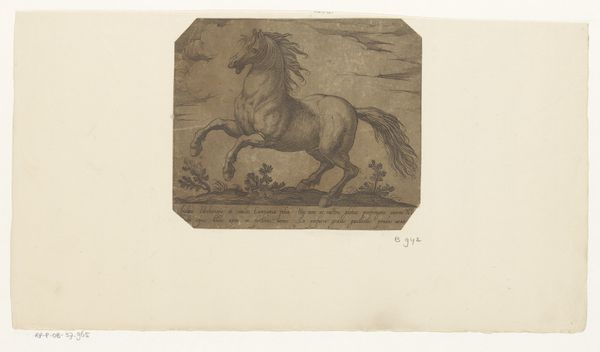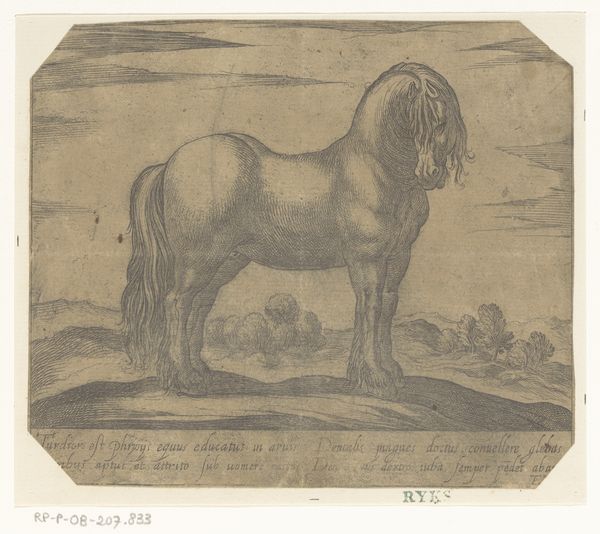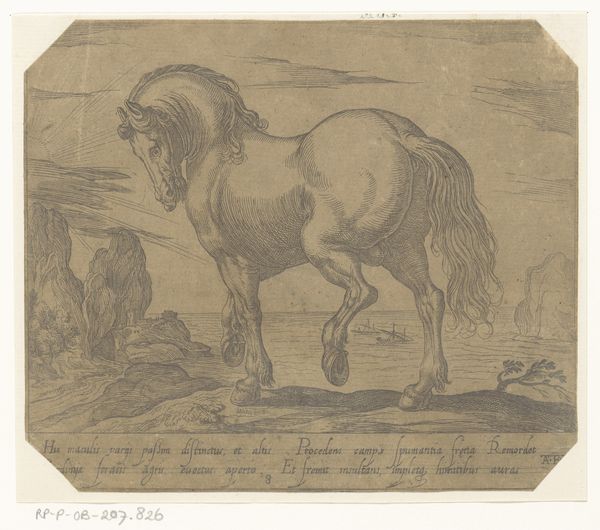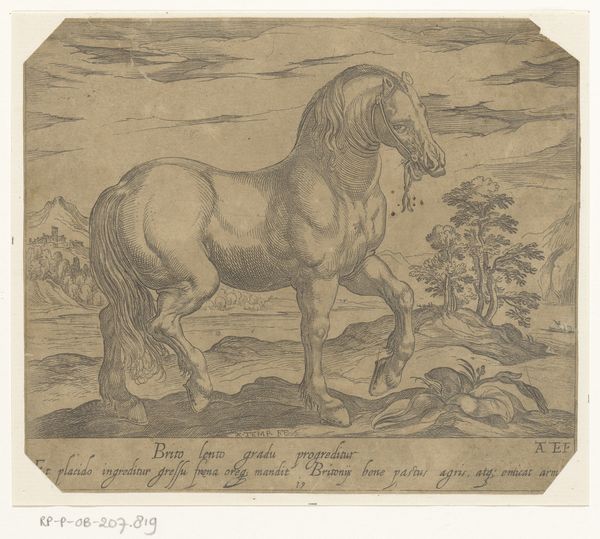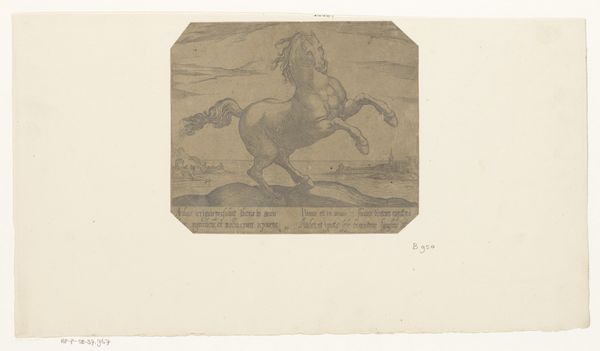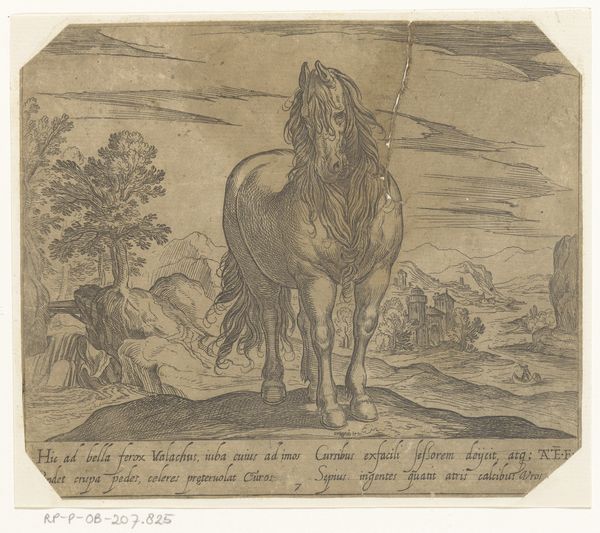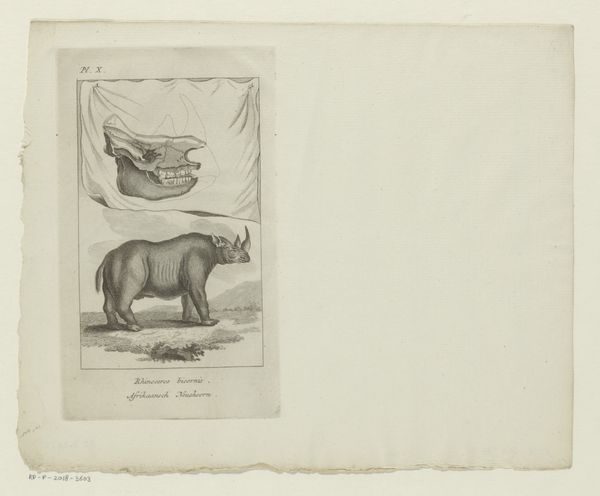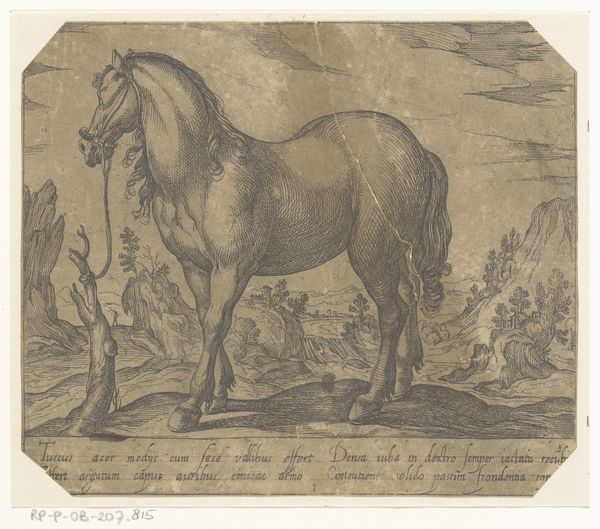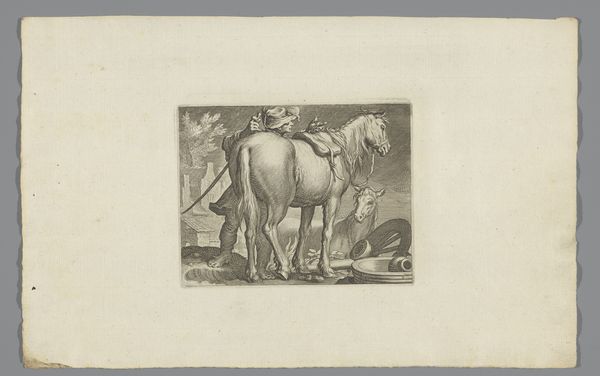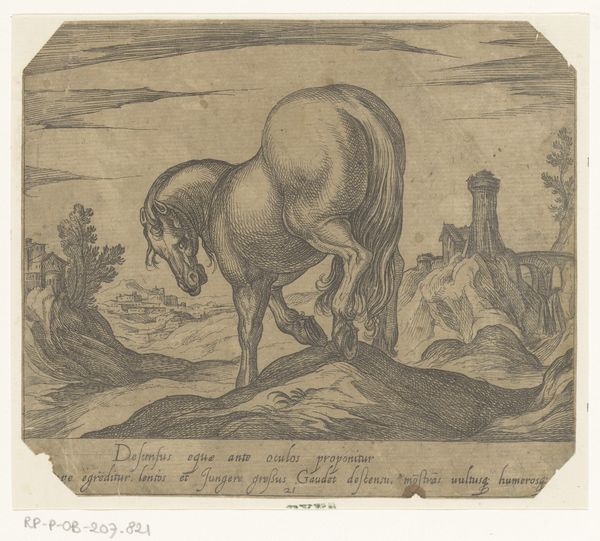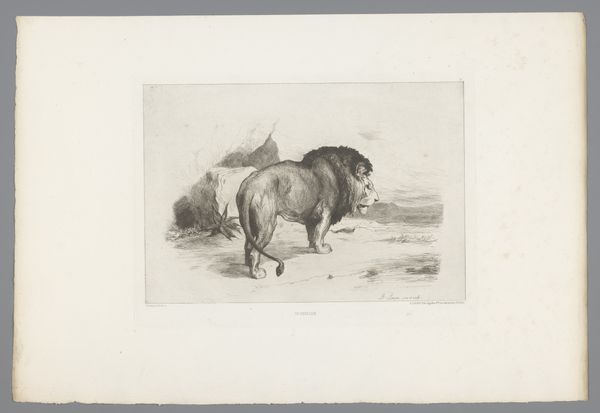
drawing, print, engraving
#
drawing
#
animal
# print
#
landscape
#
figuration
#
11_renaissance
#
horse
#
history-painting
#
italian-renaissance
#
engraving
Dimensions: height 140 mm, width 161 mm
Copyright: Rijks Museum: Open Domain
This print of a horse was made by Antonio Tempesta in the late 16th or early 17th century, using the etching process. With this technique, the artist covers a metal plate with a waxy, acid-resistant coating, then scratches an image into it with a pointed tool. The plate is then bathed in acid, which bites into the exposed metal, creating lines. Once the coating is removed, the plate can be inked and printed. Look closely, and you'll notice the crisp, clean lines made possible by the etching process. The artist has used these to create a strong sense of form and texture, particularly in the horse's mane and musculature. Consider how this contrasts with the softer, more atmospheric treatment of the landscape. Prints like these played an important role in disseminating images and ideas. It allowed artists to reach a wider audience, and for collectors to amass images on paper. The print medium, with its capacity for both fine detail and reproducibility, offered a new way of engaging with the world. Ultimately, it blurred the boundaries between art, craft, and commerce.
Comments
No comments
Be the first to comment and join the conversation on the ultimate creative platform.
